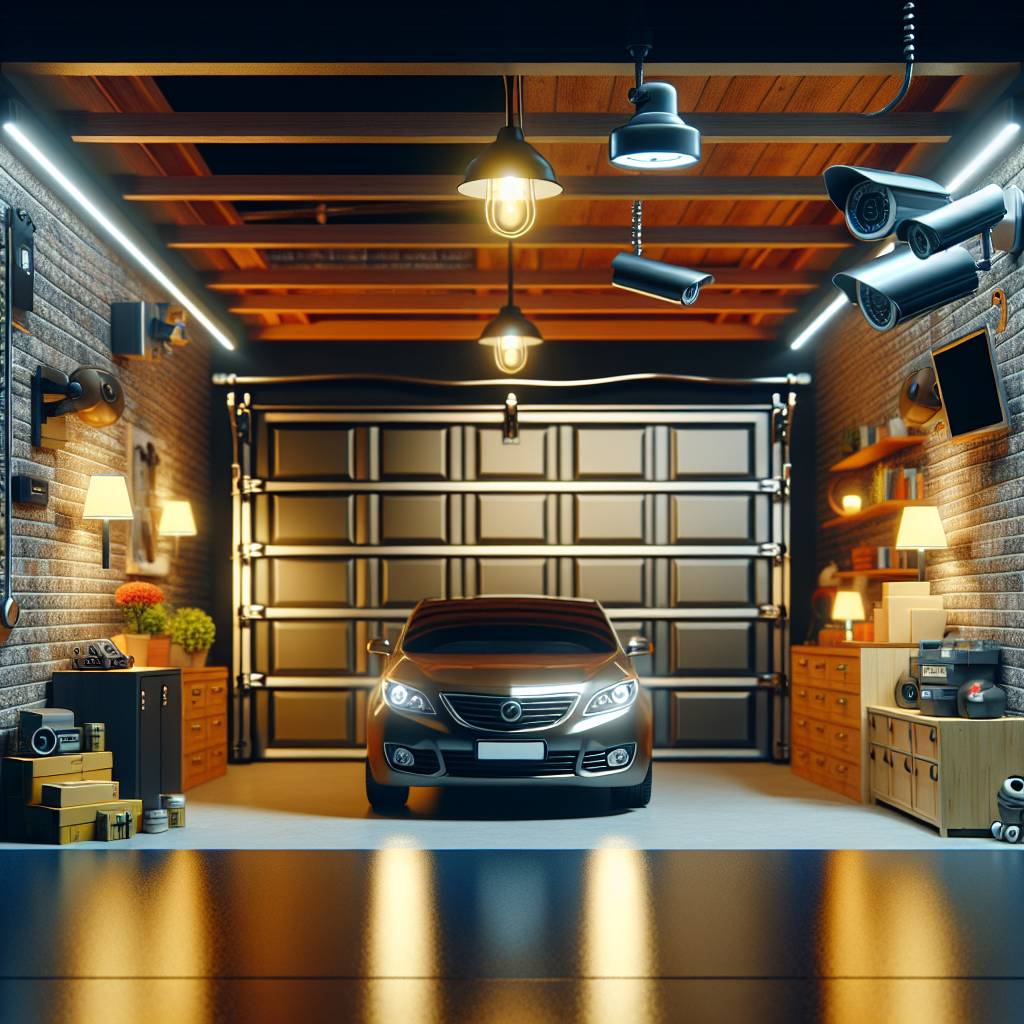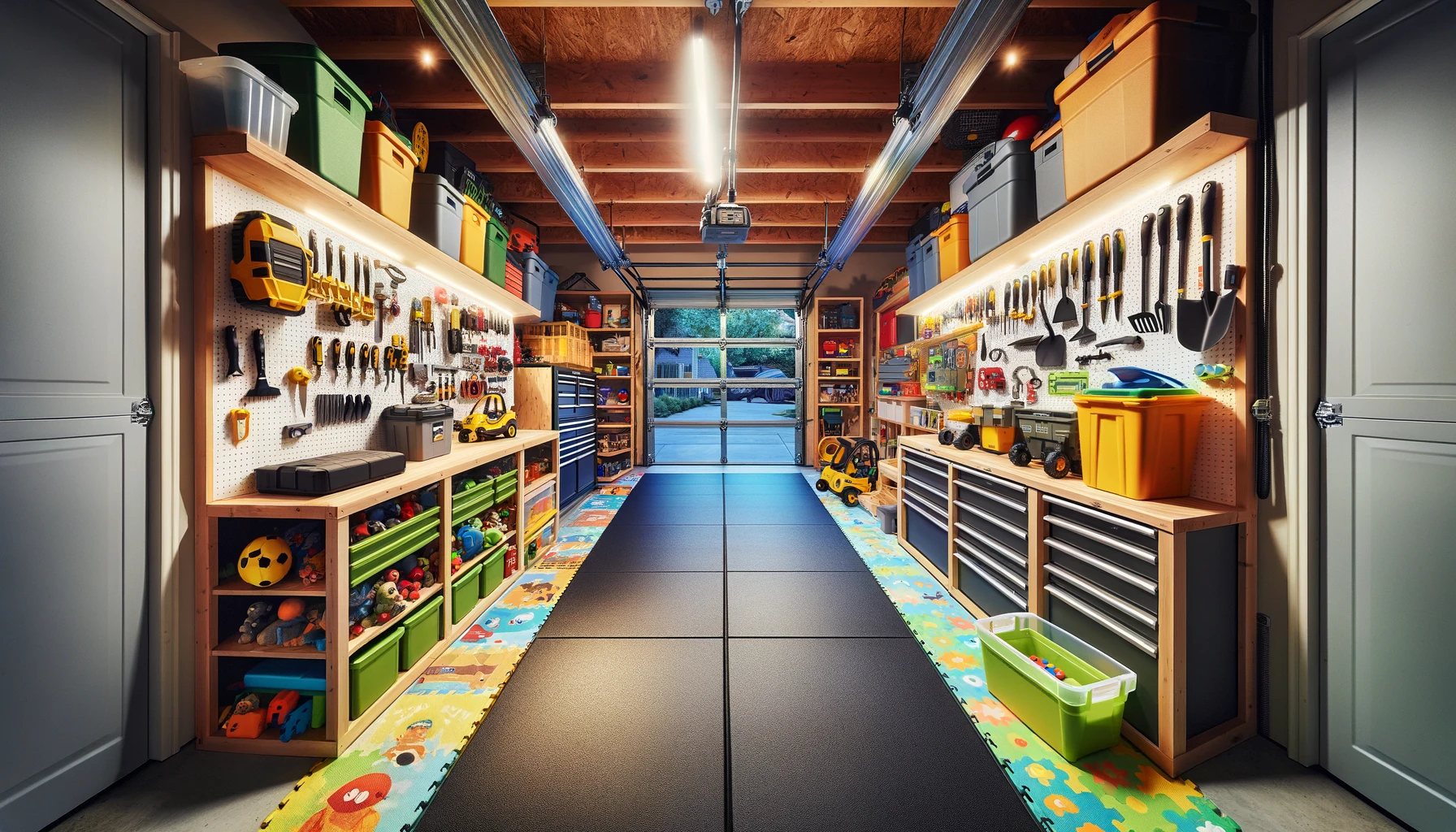Dreaming of effortlessly working on your car at home? Ever considered installing car lifts in residential garages? Imagine the convenience and space-saving benefits portable lifts bring to your DIY projects or routine maintenance tasks in your home garage. With a car lift, say goodbye to cramped spaces and back-breaking maneuvers under your vehicle. Elevate your garage game with a residential car lift, making car repairs a breeze and maximizing your workspace efficiency. Ready to level up your at-home auto care experience? Dive into the world of installing car lifts in residential garages and unlock a whole new realm of possibilities for your automotive hobbies.
Key Takeaways
- Prioritize safety by following detailed installation steps and conducting necessary safety checks and adjustments to ensure the proper functioning of the car lift.
- Understand the basics of installing car lifts in residential garages to make informed decisions and avoid potential issues during the installation process.
- Prepare adequately for the installation by gathering all necessary tools and equipment, measuring the space accurately, and ensuring proper ventilation in the garage.
- Regularly maintain the car lift by following maintenance tips provided to prolong its lifespan and ensure optimal performance.
- Factor in cost considerations such as the initial investment, installation costs, and long-term maintenance expenses when planning to install a car lift in your residential garage.
- By implementing these actionable insights, you can safely and effectively install a car lift in your residential garage, enhancing convenience and maximizing space utilization.
Understanding the Basics
Assessing Garage Space
Measuring the available space in the garage is crucial for installing car lifts. Consider the dimensions required for the lift and ensure there is ample room for maneuvering around it. Make sure to accurately assess the space to avoid any installation issues later on.
Checking Floor Strength
Verifying the concrete floor’s depth and strength is essential before installing a car lift. Look out for any cracks or weaknesses that could compromise the lift’s stability. If needed, reinforce the floor to ensure it can support the weight of the lift and vehicle.
Ceiling Clearance Check
Measuring the ceiling height is necessary to ensure it can accommodate the lift’s full height. Check for any obstructions that might obstruct the lift’s operation, such as light fixtures or beams. Adequate clearance is vital to prevent any damage to the vehicle when it is raised on the lift.
Vehicle Fitment Analysis
Determining the types of vehicles that will be lifted is crucial for car lift installations. Check the lift’s weight capacity to match it with the vehicle(s) intended for use. Consider any modifications required for accommodating different vehicle sizes, ensuring safe and efficient operation.
Preparing for Installation
Garage Measurements
Taking accurate measurements of your garage is crucial for a successful lift installation. Ensure you measure the width, length, and height of the space. Consider the layout of your garage to determine the best placement for the car lift. Factor in additional space around the lift for safety precautions and easy access to the vehicle.
Voltage and Accessories
Before proceeding with the installation, check the power requirements for the car lift. Ensure that your garage has sufficient outlets and voltage capacity to support the lift’s operation. Consider any network security accessories needed for safe and efficient usage of the lift.
Purchasing the Right Lift
Research various types of car lifts available in the market to find one that suits your needs. Look into features such as lift capacity, lifting height, and overall durability. Compare prices from different manufacturers and check warranties offered before finalizing your purchase decision.
Installation Process Overview
Preparing the Site
Before diving into the installation process, clear the garage space meticulously to ensure there are no obstacles hindering the setup. This step is crucial as it paves the way for a smooth and efficient installation experience. Once the area is clear, it’s time to prepare the concrete floor where the car lift will be installed. Ensuring a stable and level foundation is essential for the lift’s functionality and safety. Lastly, make arrangements for the delivery and unloading of the lift to streamline the installation process.
Setting Up Columns
Positioning the columns correctly is paramount in ensuring the stability and effectiveness of the car lift. It’s imperative to follow the manufacturer’s instructions meticulously to guarantee proper placement. Once in position, secure the columns firmly to prevent any movement during usage. Pay close attention to aligning and spacing between the columns to maintain structural integrity and balance.
Installing Cables and Hoses
The next step involves inserting cables and hoses inside the lift columns. This process requires precision and adherence to guidelines outlined in the manual. Proper routing and connections are crucial for ensuring safe operation and longevity of the lift. By following the designated installation procedures, you can rest assured that your car lift is set up correctly and ready for use.
Mounting Lift Arms
As you progress with the installation, it’s time to focus on mounting the lift arms securely. This step involves verifying the positioning and alignment of the arms to guarantee optimal performance. Take time to inspect the gears for smooth operation, ensuring that all components are functioning seamlessly. By paying attention to these details, you can enhance the efficiency and reliability of your car lift.
Detailed Installation Steps
Column Installation
To begin the installation process, drill holes in the designated spots for securing the columns securely. Follow the provided guidelines meticulously to ensure precise placement. It’s crucial to confirm that the columns are level and stable before proceeding further.
Cable, Line, and Hose Setup
Next, connect the hydraulic lines and power unit hoses according to the manufacturer’s instructions. Properly route the equalizer cables to ensure smooth operation of the car lift. Before moving on, it’s essential to double-check all connections thoroughly to prevent any potential leaks.
Lift Arm Mounting
Moving forward, attach the lift arms securely to the columns using the specified hardware. Verify that the arms are firmly mounted in place to guarantee safety during operation. Conduct a test to ensure that the lift arms move smoothly without any obstructions.
Safety Checks and Adjustments
Weight Support Verification
Before using the car lift in your residential garage, verify its weight capacity to ensure it can safely support your vehicles. It’s crucial to check this specification to prevent any accidents or damage to the lift. Make sure the lift can handle the weight of the heaviest vehicle you intend to lift. Conduct a weight test by gradually increasing the load to confirm its stability before regular use.
Ensuring Proper Measurements
To guarantee the safety and functionality of the car lift, double-check all measurements during the installation process. This step is essential to prevent any misalignments or structural issues that could compromise safety. Verify that the lift is properly aligned and positioned within your garage space. Ensure that all components are installed according to the manufacturer’s specifications for optimal performance.
Final Safety Inspections
Before operating the car lift, it is crucial to conduct a thorough safety inspection. Check all bolts and connections to ensure they are securely tightened and in place. Any loose connections can pose a significant safety risk during lifting operations. Test the lift’s functionality by applying a light load to ensure smooth operation and identify any potential issues that need addressing before heavier use.
Cost Considerations
Understanding Costs
To determine the total cost of installing a car lift in your residential garage, calculate the expenses for the lift itself and installation materials. Factor in additional expenses such as delivery and setup fees. To ensure you get the best value, compare costs from various suppliers before making a decision.
Total Installation Costs
When assessing the total installation costs, break them down into categories like tools, materials, and labor. These expenses collectively contribute to the overall cost of setting up the car lift in your garage. Be prepared for any unexpected costs that might emerge during the installation process.
Spike in Costs Analysis
Be vigilant about potential areas where there could be a spike in costs during the installation of the car lift. By identifying these areas beforehand, you can plan for contingencies to manage budget increases effectively. Explore alternative options that may help in reducing installation costs without compromising on quality or safety.
Maintenance Tips
Regular Inspection
Schedule regular inspections of the lift to ensure safe and efficient operation. Check components for wear and tear that may affect performance.
Ensure the lift is functioning safely by examining all parts thoroughly during inspections.
Lubrication and Cleaning
Follow the manufacturer’s guidelines for lubrication to maintain optimal performance. Regularly clean the lift to prevent debris buildup that can hinder operation.
Maintain proper lubrication to ensure the lift operates smoothly and efficiently over time.
Troubleshooting Common Issues
Learn how to troubleshoot common lift problems by referring to the manual for step-by-step guidance. Contact customer support for assistance if necessary.
Summary
You’ve now gained a comprehensive understanding of installing car lifts in residential garages. By following the detailed steps, safety checks, and cost considerations outlined, you can confidently embark on this project. Remember to prioritize maintenance to ensure the longevity of your car lift and the safety of your vehicles. Now that you are equipped with the knowledge needed, go ahead and transform your garage into a functional space that maximizes convenience and efficiency.
Frequently Asked Questions
Can I install a car lift in any residential garage?
Yes, you can install a car lift in most residential garages as long as the ceiling height and floor space meet the requirements specified by the manufacturer. It’s essential to ensure your garage structure can support the weight of the lift and vehicle.
What safety measures should I consider before installing a car lift in my garage?
Before installation, ensure your garage has adequate ventilation, proper lighting, and clear pathways. Check for any electrical or plumbing obstructions that may interfere with the installation process. It’s crucial to follow all safety guidelines provided by the manufacturer.
How much does it cost to install a car lift in a residential garage?
The cost of installing a car lift in a residential garage varies depending on factors like the type of lift, installation complexity, and additional features. On average, you can expect to invest anywhere from $2,000 to $6,000 for a basic installation. Consider getting quotes from multiple vendors for accurate pricing.
Do I need professional help to install a car lift in my garage?
While some experienced DIY enthusiasts may be able to install a car lift themselves, it is generally recommended to hire professionals for safe and efficient installation. Professional installers have the expertise and tools required to ensure the lift is installed correctly and meets all safety standards.
How often should I perform maintenance on my residential garage car lift?
Regular maintenance is crucial for the optimal performance and longevity of your car lift. It is recommended to perform routine maintenance checks every 6-12 months, including inspecting for wear and tear, lubricating moving parts, and checking hydraulic systems. Adhering to the manufacturer’s maintenance schedule is key to ensuring safe operation.






